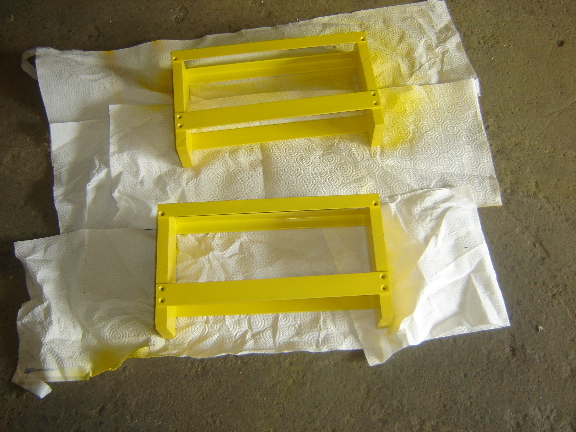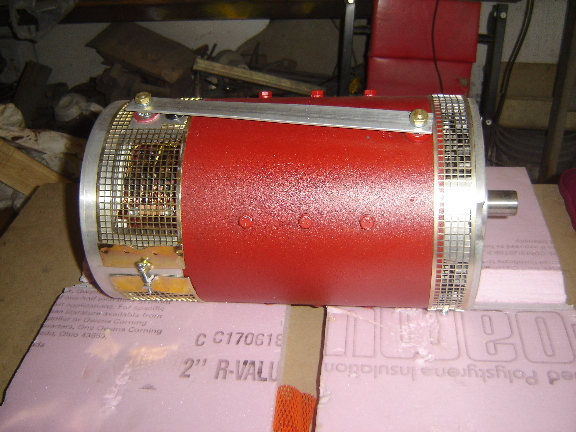
I haven't made an entry in a while...
I've been busily making battery holders and cleaning cells, although my productivity has gone down since my Summer class started on 6/30. The most time-consuming thing has been painting the aluminum that forms the structural parts of the battery holders. Next week, I'm taking a week of vacation -- which is particularly poor timing since the WarP 9 finally arrived today. When I return I'm going to begin pulling the engine and its ancilliary bits (radiator, exhaust line, gas tank, etc.). I'm also hoping to finish assembling and testing the batteries and nickel-plating the copper lugs. Finally, I hope to get the electric motor mounted while I'm still in this location. As of August 1st I'm moving to a garage that's much closer to home, but also much less "industrial", and quite a bit smaller.
Here's a couple of shots of battery holders getting their final coat of paint, and the jig I'm using to make them.
The WarP 9 is HEAVY! Some of my internal organs rearranged themselves after I lifted this out of its box and onto the test stand.
I got a little 6 amp charger at Pep Boys which OUGHT to be ideal for charging two of my 12 volt units in parallel. Unfortunately the PoS doesn't actually deliver 6 amps -- it appears to be a constant voltage source rather than a constant current source and the charging current quickly declines to around 4 amps as the battery's voltage goes up. C/10 or 3 amps per string is the minimum recommended charging current (as per Saft). Several folks on the BB600 Yahoo group have said the cells seem to be even happier at higher charge rates.
I guess my new charger can be used for "trickle" charging...
Here's another view of the motor. Note the aluminum bar stock that's
been added -- this connects the armature and stator windings so that
we have a series wound motor. Presumably one could skip this connector
and the motor could be treated as a SepEx (separately excited) motor.
That would make regenerative braking a lot easier but it's really not
practical, the windings in the motor's housing are made with really fat wire
and very few turns -- they'll look basically like a short circuit to
what ever power supply one might try to energize them with.

Here's a pic of the first (truly) complete battery module. The holder is painted w/ several coats of enamel and the nickel busbars are coated in NoAlOx.